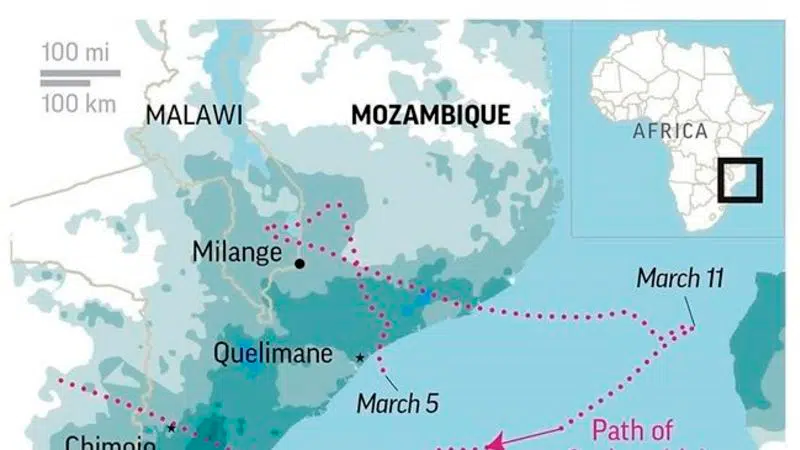
Cyclone’s huge floods leave hundreds dead in southern Africa
CHIMANIMANI, Zimbabwe — Aid workers rushed to rescue victims clinging to trees and crammed on rooftops Tuesday after a cyclone unleashed devastating floods in Mozambique, Zimbabwe and Malawi. More than 350 people were confirmed dead, hundreds were missing and thousands more were at risk.
In Mozambique, the rapidly rising floodwaters created “an inland ocean,” endangering tens of thousands of families, aid workers said as they scrambled to rescue survivors and airdrop, food, water and blankets to survivors of Cyclone Idai.
“This is the worst humanitarian crisis in Mozambique’s recent history,” said Jamie LeSueur, head of response efforts for the International Federation of Red Cross and Red Crescent Societies.